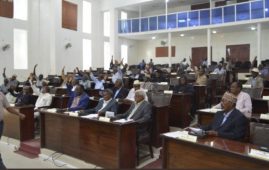(Tom Burgis – Financial Times)
Saudi Star’s proprietor, a Saudi-Ethiopian tycoon named Mohammed al-Amoudi, has spent more than $200m turning a swath of bush into a farm the size of 20,000 soccer pitches. That puts the sheikh, as he is known, in the vanguard of the global land rush.
As the populations of better-off nations move to cities in ever greater numbers, the gap between the amount they grow and the amount they eat widens. Agricultural trade has long filled this gap. But a price shock in 2007, when staple crop prices doubled in a few months, demonstrated that global markets for food can break down. Then the financial crisis created demand for investments that were not linked to volatile equities and bonds. Governments, multinational companies and institutional funds started to pour millions, then billions, into other countries’ land.
From Southeast Asia to Latin America and sub-Saharan Africa, investors are seeking to profit not simply by trading the fruits of the earth — the rice and the coffee, the oil and the gold — but by controlling the land itself.
Few countries have attracted such attention from land-hunters as Ethiopia. A nation plagued by famine now envisages vast commercial farms pumping food around the region. But for millennia, land has been the source both of great advances and of bloodshed. Saudi Star’s patch of earth is no different.
In 2009, Saudi Star took a lease on 10,000 hectares in Gambella for 50 years. Later it added 4,000 more hectares when it bought an adjacent state farm. But the project struggled at first. The site is remote, the roads mostly unpaved and the locals are sceptical, even hostile.
Saudi Star’s was one of the most high-profile projects of an investment drive in which Ethiopia’s government leased 2.5m hectares, an area slightly smaller than Belgium. More than the same again is on offer. The government’s goal was to bring in modern farming technology to generate exports that would help a serious balance-of-trade problem and, some say, cement the ruling elite’s control over the fertile lowlands.
Read the full article at the Financial Times
——-





